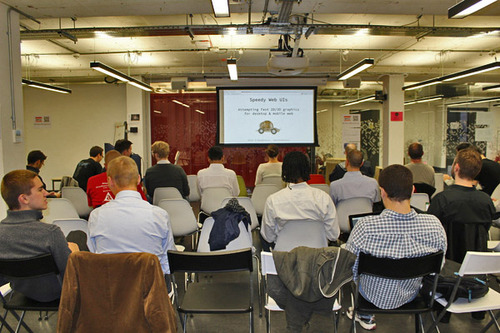Attempting fast 3D graphics for mobile web, without WebGL
Is it possible to create fast 3D interactive graphics for mobile devices, using web technologies? Since WebGL is not yet well supported on mobile devices, what technology should you use? CSS3D? Canvas? Or something else? And is there a high-level graphics library that could help you?
That was the subject of my presentation last night at the HTML5 CodeShow meetup.

I’ve been fortunate enough to be able to use Three.js for a couple of desktop web projects recently, and I’ve been very impressed with how easy it makes it to develop WebGL applications.
So when we were tasked with creating a new prototype mobile web application that may benefit from 3D graphics (an app for helping students to revise, called ZamBlocks), I jumped at the chance to try Three.js again. In this case, I wouldn’t be able to use its WebGLRenderer, but it also comes with a CSS3DRenderer and a CanvasRenderer. Both have good support on mobile devices. But then there’s the question of performance…
My presentation runs through the different things I attempted, to try to achieve a good frame rate on various mobile devices. Along the way, I ran into some big hurdles, but I also found a couple of optimisations that helped significantly.
And as it turned out, the final designs for this particular prototype didn’t really require any 3D elements or whizzy animations. (In fact, the whole thing turned out to be very simple. If I was to start from scratch, I’d probably just use DOM elements, or maybe <canvas> directly without a library). But since we’re an R&D team, it’s good for us to try pushing the boundaries and seeing what we can learn along the way. It was a great opportunity to try the other Three.js renderers and explore what’s currently feasible for mobile devices.
As well as Three.js, my presentation also briefly covers Pixi.js, a fairly new 2D graphics engine. A bit like a 2D version of Three.js, it’s built for speed. It will use WebGL if it’s available, but if not fall back to Canvas.
My slides contain lots of embedded examples and videos of how things look on mobile. You can check them out here (arrow keys / swipe to navigate):
http://speedy-web-uis.herokuapp.com
And the code is on GitHub here:
